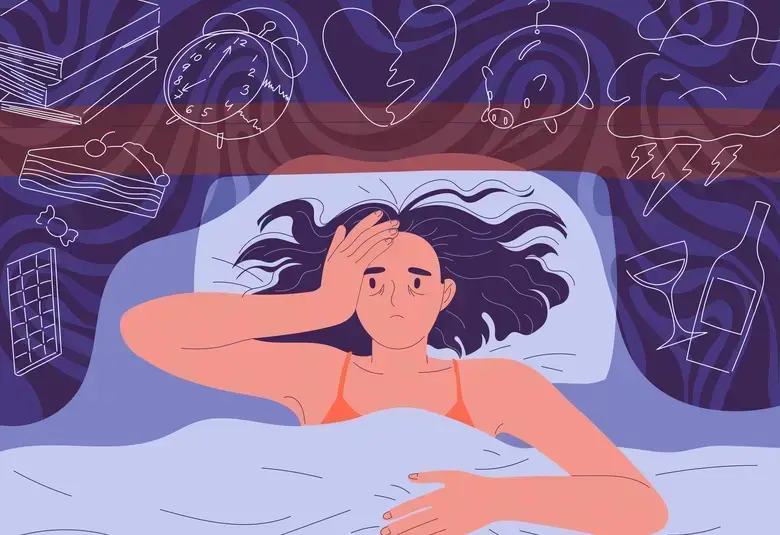Schizophrenia treatment has moved from mainly addressing relapse prevention and symptom suppression, to promote recovery and assist patients in attaining personal life goals1-3 said Sofia Brissos, Centro Hospitalar Psiquiátrico de Lisboa, Lisbon, Portugal in a satellite symposium that addressed patient perspectives on treatment outcomes and goals in schizophrenia at ECNP in Copenhagen.
Patient and caregiver needs, expectations and personal experiences may differ according to the stage of the disease, e.g. first-episode psychosis (FEP) versus chronic schizophrenia. A person experiencing FEP might express hope of returning to normality while a person suffering from chronic schizophrenia would emphasize a wish for fewer relapses4.
Clinicians and patients bring different, but equally important, knowledge and expertise to the process of making decisions about care and treatment
Shared decision-making is a process in which clinicians and patients work together to make decisions about care and treatment based on both clinical evidence and the patient’s informed preferences.5 Central to this is the recognition that clinicians and patients bring different, but equally important, knowledge and expertise to the process. Shared decision-making can lead to better decisions, improved health and health outcomes and more efficient allocation of resources.
Dr Brissos presented data on subgroups of patients valuing different treatment goals, with a “Clinically focused” group prioritizing reduction in disease symptoms and hospitalizations, while the “Functionally focused” group prioritized improved relationships with family and friends, and an increased interest in hobbies, studies or work.6
Different prioritizations could have an impact on choice of treatment, and is indeed reflected in clinical practice guidelines stating that pharmacological and psychosocial interventions should be tailored to the goals, needs, abilities, and circumstances of individuals7.
Dr Brissos concluded by stating that a deeper understanding of how patients prioritize treatment goals may help to facilitate patient engagement, and likely increase satisfaction with care.
Professor Rajiv Tandon, Western Michigan University College of Medicine, Michigan, USA presented data from a patient survey that captured patients’ experiences of antipsychotic side effects.8
A total of 435 participants from both EU and non-EU countries were included and the most common side effects that patients frequently experienced with second-generation antipsychotics were ‘feeling sleepy during the day’, ‘experienced difficulty sleeping’, ‘mouth has been dry’ and ‘feeling drugged like a zombie’.
Side effects perceived as bothersome by patients placed serious impact on all measured aspects of patient functioning: physical, social, emotional, and vocational
Side effects perceived as bothersome by patients, i.e. activating, sedating, metabolic (weight gain) and endocrine (problems enjoying sex), were reported to impact patient functioning and emotions. Scores between 50 and 70 on a 0 to 100 visual analogue scale indicated a serious impact on all measured aspects of patient functioning: physical, social, emotional, and vocational. Furthermore, quality of life was worse in patients with higher frequency of side effects.
Professor Tandon ended his talk by emphasizing the significance of capturing the patient’s perspective when assessing the impact of antipsychotic side effects.
Individualizing all treatments - both pharmacological and non-pharmacological - can potentially help patients achieve a better quality of life
People living with schizophrenia experience a quality of life which is worse than that of healthy individuals and their quality of life worsens with illness progression.9,10 Relapse prevention leading to functional remission is therefore the first step in achieving a better quality of life said Assistant Professor Diane McIntosh, University of British Columbia, Vancouver, Canada. The course of illness in schizophrenia is heterogeneous.11 Furthermore, quality of life includes both subjective and objective components, and there are differing views of optimal quality of life among different stakeholders - patients, family and physicians. Dr McIntosh stressed that individualizing all treatments - both pharmacological and non-pharmacological - can potentially help patients achieve a better quality of life.
What is evidence-based medicine? This question was asked by Professor Leslie Citrome, New York Medical College, Valhalla, New York, USA at the outset of his talk. He continued by incorporating the concept of “evidence-based medicine”, i.e. integrating individual clinical expertise with the best available external clinical evidence from systematic research12, into “evidence-based clinical practice” - an approach to decision making in which the clinician uses the best evidence available, in consultation with the patient, to decide on which option suits that patient best.13
As shown in the Clinical Antipsychotic Trials of Intervention Effectiveness (CATIE)14 study, intolerability was one of the main reasons for patients discontinuing their medication.
The impact of any side effect may be interpreted differently by patients and by clinicians. A side effect that causes distress to a patient is more likely to impact adherence, whereas a clinician may be more inclined to be concerned about side effects that pose physical harm.15
Understanding the relevant scientific evidence requires the evaluation of effect size and the basic tools of number needed to treat (NNT) and number needed to harm (NNH) are often used for this purpose.
NNTs for approved treatments in psychiatry are generally small. For example, two to five patients with schizophrenia need to be treated to see one patient benefit of a 40% reduction in Psychiatric Rating Scale scores or be classified as ‘much improved’ on a Clinical Global Impression scale as opposed to giving them placebo.16
However, NNH values for specific side effects versus placebo vary much more than NNTs for efficacy measures versus placebo, meaning that the same drug can have very different NNHs for e.g. weight gain, somnolence and akathisia.
One size does not fit all
Patient heterogeneity regarding treatment response thus makes it necessary to have choices that would increase the chance of finding the right treatment for the right person – one size does not fit all, said Professor Citrome.
Paul Gionfriddo, President and CEO, Mental Health America, USA, presented results originating from an online screening tool for psychosis, using the Prodromal Questionnaire (PQ-B), a self-report screening measure for psychosis risk syndromes. Of almost 300.000 persons completing the psychosis screen in 2017-2018, 73% had possible risk of developing psychosis. The majority of screeners were under 25 years of age, with an income below the median and they were less likely to have health insurance.
After screening, screeners expressed a need for information about mental health; worksheets/apps offering coping skills; online/mobile program to track symptoms and health; referrals to healthcare professionals or peers; and lastly phone numbers for immediate support. In response to these results, Mental Health America has built an online resource, with personalized recovery tool suggestions for each screener.
Mr Gionfriddo emphasized the need to question bias toward a single perspective or traditional clinical care, and the importance of listening to patients, and trusting them to say what they want, and when they want it.
Educational financial support for this Satellite symposium was provided by H. Lundbeck A/S.
Our correspondent’s highlights from the symposium are meant as a fair representation of the scientific content presented. The views and opinions expressed on this page do not necessarily reflect those of Lundbeck.




